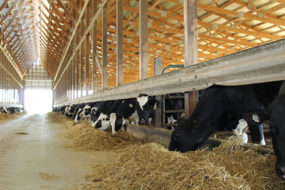I travel in military vehicles only. Our Provincial Reconstruction Team (PRT) has armored Humvees and armored tactical SUVs. But sometimes I must get out of the weeds. So our operations officer schedules a Black Hawk helicopter, and we go up. There are other kinds of tactical and nontactical vehicles here. But these three take me where I need to go.
I have been flying at least once a week. The last two weeks, my frequency has been increased. Why? Because aerial assessments are based on two components:
•What has changed from the reference flight?
•What opportunities for development do I see from up high?
The first is a question of flux. That is, as the growing season moves forward in time, what is the estimated rate of decreasing surface water area, what is the estimated change in hectare land use from winter wheat to a second crop like corn or tobacco and then how rapidly are crops moving to a seed stage from a vegetation stage as evidenced by diminished green color? These assessments evaluate change over time. Note that they are qualitative; they are estimations. They are used in a matrix of rural health indicators. As such, I see more in a 120-minute flight than a 12-hour Humvee ride.
The second is unpredictable. I never know what I will see that may be different. So we mark our flights with a grid counter and tie a comment to the grid. We may even write that grid into a ground mission for a site quality assessment. In fact, we do this often. I have found few opportunities the Afghanistan farmer has not already discovered. Of course, if money was plentiful we could build reservoirs for holding back water. Then, instead of reaching Pakistan to the south, the water could be stored and transported through surface or buried conveyance structures, thereby supplying much-needed irrigation water for transpiration this time of year. But we are not at that stage yet. So the meandering of rivers out of their banks during spring and early summer continues. The process is highly erosive. If snow has been plentiful, then the erosive factor is increased.
During a recent flight over some rather productive farmland that is along rivers and large drainage creeks, I happened upon a pleasant surprise. In an arable, small country like Afghanistan, farmers have developed a remarkable series of terraces. They are lovely and functional. They show the resourcefulness of these farmers. In fact, some of these terraces have been in place for thousands of years. I have visited regions like this in other parts of the world including China and Honduras, but until this flight, I had not seen such an extensive network of terraces that extend farmland up the side of a mountain.
For those of us having been educated in the best schools, these observations are humbling. As technical advisers and scientists, we arrive in another part of world yearning to shift the arrow of humankind upward. But over and over in my career I arrive and find myself learning from a history that may go back centuries. Indeed, these terraces perform so well that a local farmer can teach me the conservation practice of erosion control. That is humbling.
The farmer has built into the mountainside or hillside a terrace; the field is nearly flat so water moves slowly, does not erode soil and eases into the soil void, replacing air space. I see the curvature of physical space, the color of soil and hue of green plants, the walking paths and fences that follow the field border, the residue left on the surface, the tillage of topsoil, the slow flooding of water at one edge, the careful shovelings of earth that make a water path, the germinations and leavening of corn and the grass for cattle among the plots.
For the traveler up here in the broad, blue sky, below me is the beauty of the world, the aesthetical portrait of an arrested soil hugging the terrace and feeding a village.
Thus, my privilege for being here, in this case way up here. PD



